Hull Geological
Society

News archive 2023-2024
Copyright Hull Geological Society.
(updated 24th Auhust
2025)
Thursday 21st November 2024 -
Zoom talk by Tony Felski about "The
Permian Geologyof the Wakefield district".
Abstract: Most of the Wakefield district is underlain
by the Coal Measures of the Carboniferous Period. The sandstone’s siltstones and
coals being deposited in hot, wet and humid tropical swamps. However to the east
of the Wakefield district the geology is totally different having been deposited
in arid deserts and from sub -tropical seas.
This presentation shows the rocks of the Permian. In the Wakefield district
and gives some details of the depositional environment.
-o0o-
Tuesday 8th
October 2024 - extra meeting
-
lecture by
Laura Burrel Garcia of the British Geological Survey on "Geological
Mapping of the Yorkshire Wolds Chalk aquifer"
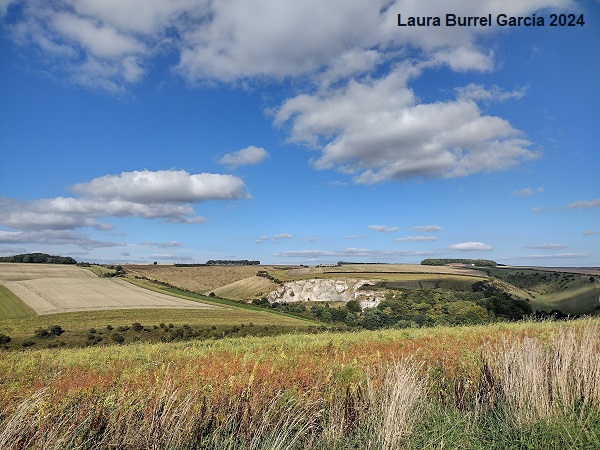
Burdale Quarry
Abstract:
The BGS, in
collaboration with the Environment Agency and Yorkshire Water has been
undertaking a five year mapping project focusing in the Yorkshire Wolds Chalk
aquifer. The project integrates field mapping techniques including feature
and brash mapping, remote sensing, LiDAR and other geophysical surveys, borehole
analysis, seismic interpretation, structural modelling and biostratigraphy.
The results
of the surveys and the resultant new map has greatly enhanced our understanding
and has identified a large number of previously unidentified faults. The E-W
predominant fault trend in the northern Wolds is in an area of high structural
complexity as the inland expression of the Flamborough Head Fault Zone, which
has undergone numerous phases of reactivation. These faults are intersected by
the NW-SE-trending Hunmanby trough, a graben that crosscuts and offsets main
fault trend. Moving southwards in the region the main E-W trending faults
transition into a NE-SW trend, likely related to those observed in the faults
affecting the Jurassic sediments of the Vale of York.
In addition
to mapping structural elements, stratigraphic boundaries between the different
chalk formations have been updated reflect up to date research and also to fit
the modern topographic contours of the area. This has led to new estimations for
the thickness of the chalk formations and their lateral variation. When combined
with our better understanding of the regional fault networks and their
properties will be key to determine if they enhance secondary permeability or
rather inhibit groundwater flow.
Understanding
the geometry and characteristics of the Quaternary deposits overlying the chalk
is also fundamental to understand factors like the rates of infiltration of
meteoric waters into the aquifer. The new mapping of the Quaternary includes the
distribution of head, alluvial, lacustrine deposits, and Devensian glacial till.
The composition of pebbles in the glacial sediments is vertically and laterally
variable, indicating a number of bedrock sources of proximal to the region, but
also from the Southern North Sea, Southern Uplands and Midland Valley of
Scotland.
The results arising from the new mapping are
incredibly important, not only for their scientific value but also for the
impact they will have in the understanding of groundwater flow. The Chalk
aquifer regionally is responsible for supplying high quality water to almost a
million people, and also supports an abundance of commercial/industrial needs.
This study marks a milestone in the understanding of the Yorkshire Wolds Chalk
aquifer and will result in a more sustainable management of our valuable water
resources. In this talk we will discuss the different mapping methods used in
the project and will show the preliminary results on the mapping of the Chalk
stratigraphy and structure.
-o0o-
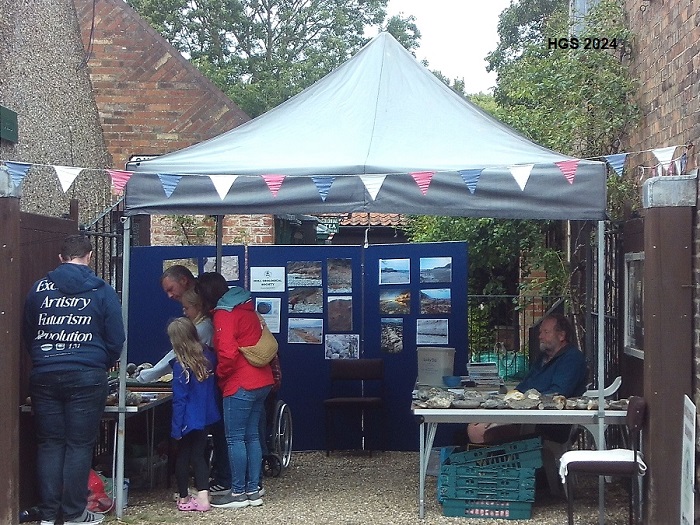
At our Roadshow at
Hornsea there were displays by Jack and Brenda Almond, Lewis and Stuart. Mick
Oates, Mike Horne, Rosy Barwell and Terry Rocket were the “experts” on the
“finds Desk”. It was really busy up to 1pm and was quitter for the afternoon.
Rich Beck helped us pack up the displays, tables and gazebo.
-o0o-
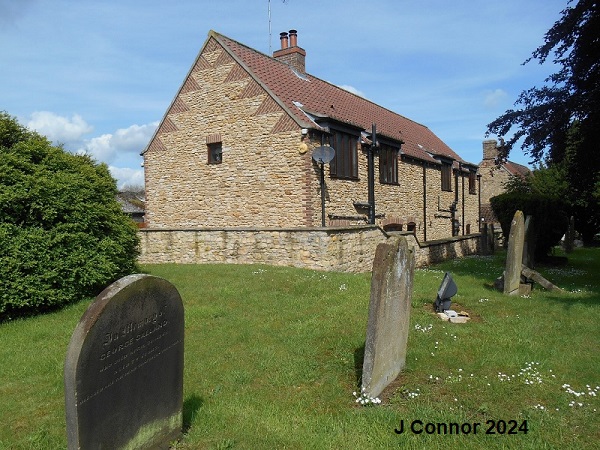
Wednesday 28th August 2024 – Evening Zoom
Talk
by
John
Connor
-
“Cave Oolite, Bog Iron & Pantiles:
Some useful geologic products from the Southwest Wolds area
”
Abstract –
The Yorkshire Wolds are rightly known for the rolling chalk landscape, dry
valleys and of course for the magnificent chalk cliffs of Flamborough Head. But
there’s more to the Wolds than the Cretaceous Chalk, albeit in much smaller
quantities. Along their southwestern edge there are thin outcrops/subcrops of
Jurassic rocks, some of which have, or have had, significant economic value.
Perhaps foremost is the wonderful Cave Oolite building stone, seen in many
buildings from Sancton in the north to Welton in the south – much of it in
churches but also in private houses and farm buildings. Back in the Iron Age,
the marshy land to the west of the Wolds – the post-glacial Humberhead Levels –
yielded material that was smelted in primitive kilns to produce one of the
earliest forms of workable iron. Thirdly, and stretching it a bit to call them
“rocks” or from the “SW Wolds”, are the extensive Holocene clay deposits that
today are used for the main British production of pantiles – that most efficient
and attractive type of roofing tile, common in the east of England and Scotland.
This talk will review the geology of these rocks and show examples of their use.
-o0o-
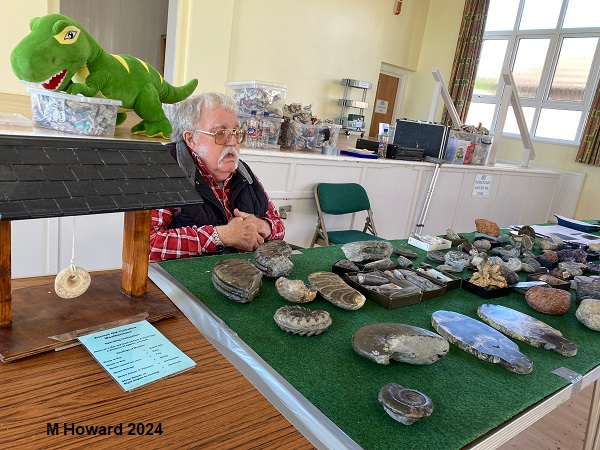
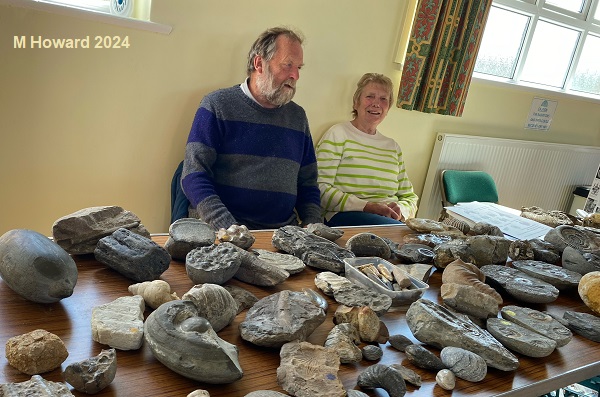
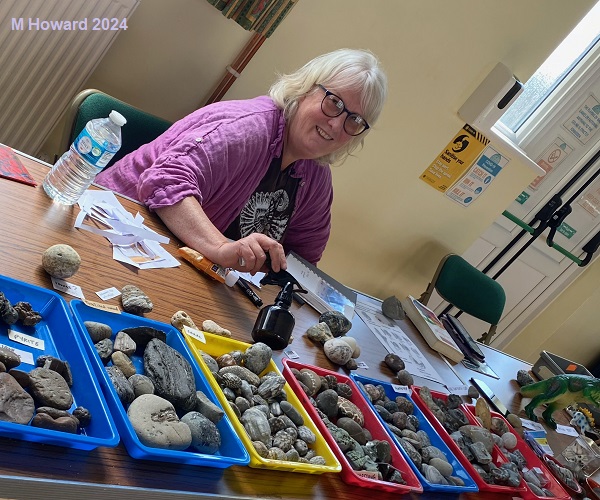
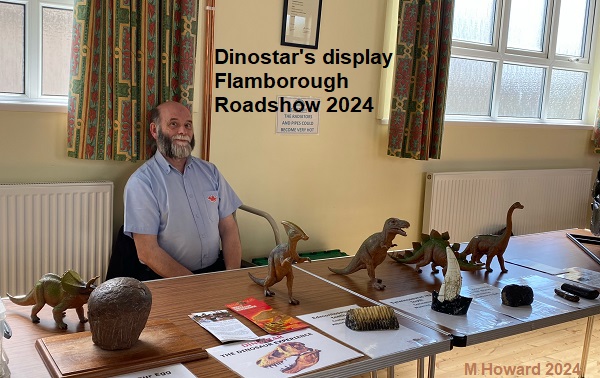
Flamborough Roadshow Sunday 30th June 2024 - Report by
MaryHoward with additional information from Peter Carpenter and Stuart Jones –
The Rock and Fossil roadshow at Flamborough Village Hall was warmly welcomed by
both residents and visitors from further away. Excellent displays, book sales
and delicious cakes kept the crowds happy. The finds table was busy, with guests
bringing their treasured stones to be identified by Terry on the Finds Desk.
Dinostar, the dinosaur experience from Hull, brought a fascinating collection of
specimens. A rich collection of rocks and fossils was also on display from
members of Hull Geological Society – Brenda and Jack, Lorraine, Mary and Stuart.
Brenda and Bronwen had baked cakes for the event. Bronwen and Chris sold the
refreshments. Rosie and family, Elayne and Peter and Angela were also there to
help. The event was busy until about 2-30pm, perhaps because visitors were
wanting to watch the European Football Championship on the television? Stuart
told me that it was ‘the best we’ve done’.
Thanks to all those who made today possible, and to
everyone who came and joined in.
-o0o-
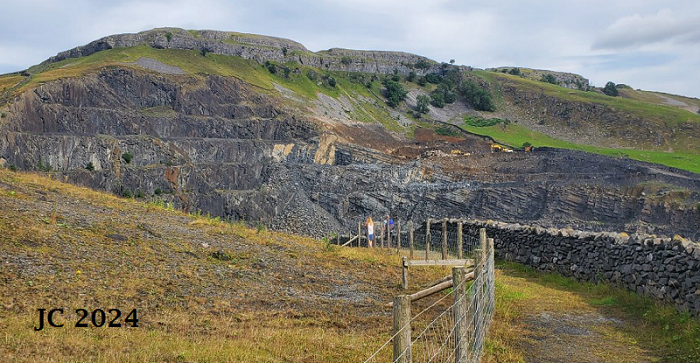
Wednesday 5th June 2024 - talk on
Zoom - John Connor on "Moughton
& the Elusive Unconformity".









